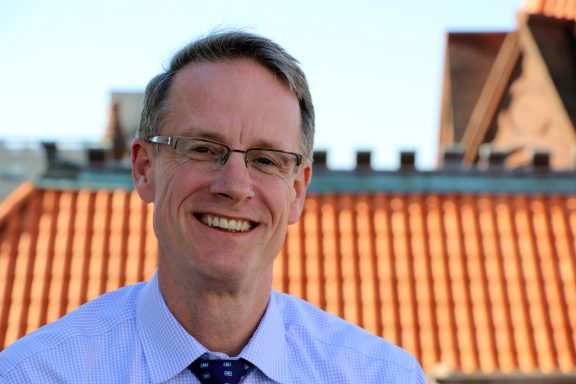With the baby boomer generation aging, homelessness among the elderly has been front and center in the media. Studies continue to show the detrimental impact that life on the streets has on the homeless population, and the exacerbation homelessness has on health issues. Elderly homeless people have significantly different needs compared to other homeless populations.
CUCS created an initiative to focus on older formerly homeless people living in supportive housing. We sat down with Joe DeGenova, our Associate Executive Director, to discuss how our primary care initiative is helping the elderly adults.
What does the elderly population at CUCS look like?
People move into supportive housing at different ages. When you look at the average age of homeless people, it’s always around 45 in the shelters and 48 on the streets. Since September 2007, we have set aside almost all of our new units and vacancies due to re-rentals for chronically street homeless people rather than people coming from the shelters. Because of this, people are slightly older when they move in, and their health has been compromised by their time on the streets. The good news is that once they are in our housing programs, they tend to stay. Nearly 100% of them will remain stably housed, and because tenant turnover is low, 7 to 8% a year, most of them will age in place in our housing.
How did the primary care initiative’s work with elderly adults start?
The primary impetus behind the initiative was the recognition that people generally want to stay in their own homes as long as possible. They don’t want to go to a nursing home or any other kind of assisted living until it is absolutely necessary and, if possible, they would like to avoid that altogether. Some of our older tenants are not able to make good use of the mainstream healthcare system, either because they are just afraid to find out about their health problems, or they have had less than satisfying experiences in clinics where primary care practitioners have to see 30 people a day and can not spend the time necessary to address the complexity of their situation.
What are some challenges that you have you encountered?
The first difficulty we ran into was finding primary care practitioners who were well suited for a non-traditional setting. Our primary care initiative differs significantly from traditional, community-based health care, our practitioners work directly in the supportive housing programs where people live. Margo Simon, a physician who is board certified both in psychiatry and internal medicine and well suited for a non-traditional setting, was hired and her leadership with the primary care practitioners has been critical for us.
What was accomplished?
We are helping people improve their health, enabling them to have a higher quality of life, and keeping them where they want to be – in their own apartment. One of our first older primary care patients had lived on the streets for over 20 years, hadn’t seen a doctor outside of an emergency room or inpatient stay for all of that time. Now he’s in housing, develops a foot infection that will not heal, and agrees to see our primary care practitioner. She finds out that he has diabetes, tests his blood sugar, and finds out it’s over 400, dangerously high. He also had very high blood pressure. She saw him once a week for the following six weeks and was able to work with him to get everything to where it should be. Following that, she went to work on his smoking and his diet, and they developed a very good working relationship.
Having primary care practitioners on-site has helped the supportive services staff be more comfortable and effective with their tenants who have significant medical problems, which really adds to their job satisfaction. Besides working individually with people, they also provide educational presentations on health issues which helps the staff understand things better, feel calmer and more effective.
In your view, why is this important?
I have a simple rule and we talk about it frequently at CUCS. We want our services to be what we would want them to be, if we were using them, or a member of our family was using them. Sometimes when we talk about these things, we talk about them as abstract issues, almost as if at a distance. All you have to do is stop and think if you have ever had a serious health problem or had a family member with a serious health problem and what it would mean to not be able to take good care of them.
A lot of our clients have two or three chronic conditions and many of them have health problems that are not episodic, but rather, ongoing so it takes an ongoing approach to care for them. Some of them have other challenges that make it hard for them to understand what they need to do to take care of themselves. They need extra time and support, sometimes to explain things better or numerous times, and sometimes it’s just fear. People are afraid of what it would mean to understand everything that they’ve got going on and they need help getting past the fear.

